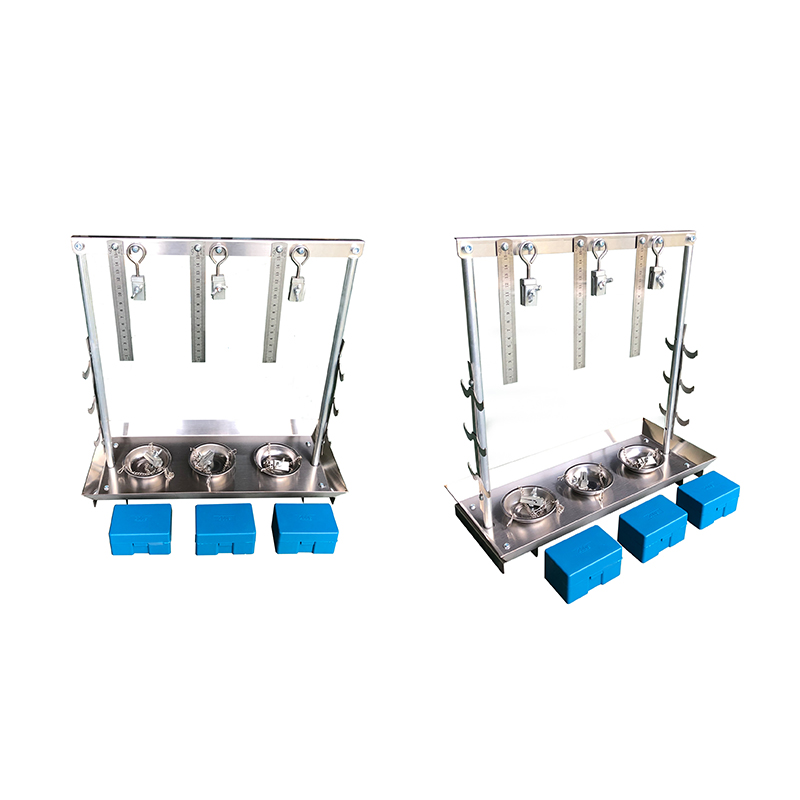electrical resistance tester
Understanding Electrical Resistance Testers A Comprehensive Guide
Electrical resistance testers, commonly referred to as ohm meters, are essential tools used in various fields of electrical engineering, electronics, and maintenance. These devices measure the resistance of electrical components, circuits, and systems, playing a critical role in troubleshooting and ensuring overall electrical safety.
What is Electrical Resistance?
Before delving into the details of resistance testers, it is important to understand the concept of electrical resistance. Resistance is a measure of the opposition that a material offers to the flow of current. It is expressed in ohms (Ω) and depends on factors such as the material's properties, temperature, and dimensions. In practical terms, lower resistance allows current to flow more freely, while higher resistance restricts it.
Why Use a Resistance Tester?
Resistance testing is pivotal for diagnosing electrical issues. For instance, in motors, faulty windings may cause excessive resistance, leading to overheating and potential failure. Similarly, in circuit boards, poor connections can introduce unwanted resistance, affecting performance. By using a resistance tester, technicians can identify these problems before they escalate, thereby preventing costly repairs and ensuring equipment longevity.
Types of Resistance Testers
There are various types of electrical resistance testers, each designed for specific applications
1. Digital Multimeters (DMMs) These are versatile tools that measure voltage, current, and resistance. Most DMMs are equipped with an ohm meter function, making them suitable for general electrical troubleshooting.
2. Stand-alone Resistance Meters Specifically designed for measuring resistance, these devices offer high accuracy and are often utilized in laboratory settings or where precision is crucial.
3. Megohmmeters (Insulation Resistance Testers) These testers apply a high voltage to measure insulation resistance. They are particularly useful for testing the integrity of electrical insulation in cables and transformers.
electrical resistance tester

How to Use a Resistance Tester
Using a resistance tester is relatively straightforward. Here’s a step-by-step guide
1. Power Off the Circuit Ensure that the electrical circuit or component is powered down to avoid damage to the tester and ensure safety.
2. Select the Resistance Measurement Setting If using a multimeter, turn the dial to the resistance (Ω) setting. For stand-alone testers, follow the manufacturer’s instructions.
3. Connect the Probes Attach the probes to the two points where the resistance needs to be measured. For components like resistors, connect to each terminal.
4. Read the Measurement Observe the display for the resistance value. It’s essential to interpret the reading correctly; for instance, a resistance close to zero indicates a short circuit, while infinite resistance suggests an open circuit.
5. Document the Results For accuracy and future reference, note down the resistance values observed, especially when troubleshooting persistent issues.
Conclusion
Electrical resistance testers are invaluable in the toolkit of engineers and technicians, providing crucial insights into the health of electrical systems. By understanding how to properly use these devices, professionals can enhance their diagnostic capabilities, ensuring the reliability and safety of electrical components. Whether in industrial settings, maintenance routines, or DIY projects, mastering resistance testing can lead to more efficient problem-solving and preventive measures in electrical systems.
-
Why the Conductor Resistance Constant Temperature Measurement Machine Redefines Precision
NewsJun.20,2025
-
Reliable Testing Starts Here: Why the High Insulation Resistance Measuring Instrument Is a Must-Have
NewsJun.20,2025
-
Flexible Cable Flexing Test Equipment: The Precision Standard for Cable Durability and Performance Testing
NewsJun.20,2025
-
Digital Measurement Projector: Precision Visualization for Modern Manufacturing
NewsJun.20,2025
-
Computer Control Electronic Tensile Tester: Precision and Power for the Modern Metal Industry
NewsJun.20,2025
-
Cable Spark Tester: Your Ultimate Insulation Assurance for Wire and Cable Testing
NewsJun.20,2025
 Copyright © 2025 Hebei Fangyuan Instrument & Equipment Co.,Ltd. All Rights Reserved. Sitemap | Privacy Policy
Copyright © 2025 Hebei Fangyuan Instrument & Equipment Co.,Ltd. All Rights Reserved. Sitemap | Privacy Policy
